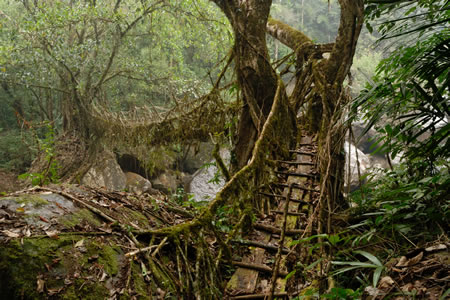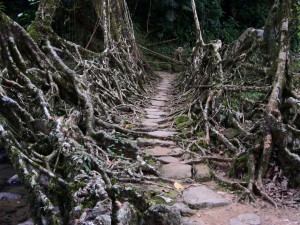What’s the best way to build an eco-friendly bridge that doesn’t damage the environment? Well you grow it silly! In Southern India, in the hills of Khasi and Jaintia, a special Indian Rubber tree proliferates. Luckily for local, these rubber tree’s have roots of steel.
Aptly named ‘Ficus Elastica’, these incredible plants are accustomed to rooting themselves in precarious places. That’s why their roots are so strong. They can perch atop a bolder or even make the middle of a flowing river a comfy home.
The War-Khasis tribe in Meghalaya have harnessed the strength of these rubber roots and use them to weave bridges across the area’s many rivers. Whenever they need to forge a river, they just grow their own bridges!
Young rubber trees are planted on both sides of the river. Usually, their roots will fan out, but the War-Khasis use betel nut trunks to create braces which guide the roots to grow in a straight line across the river. When it reaches the other side, it’s allowed to take root.
Some of the smaller bridges can be ready in a couple of years, but the biggest bridges (some up to 100 feet long) can take ten to fifteen years. The bridges are sturdy and strong and the bigger ones can support up to 50 people at a time. The oldest bridges are over 500 years old.
Whoops there grows another rubber tree plant!
All credit for this blog goes to Atlas Obscura’s great piece which you can read here.





